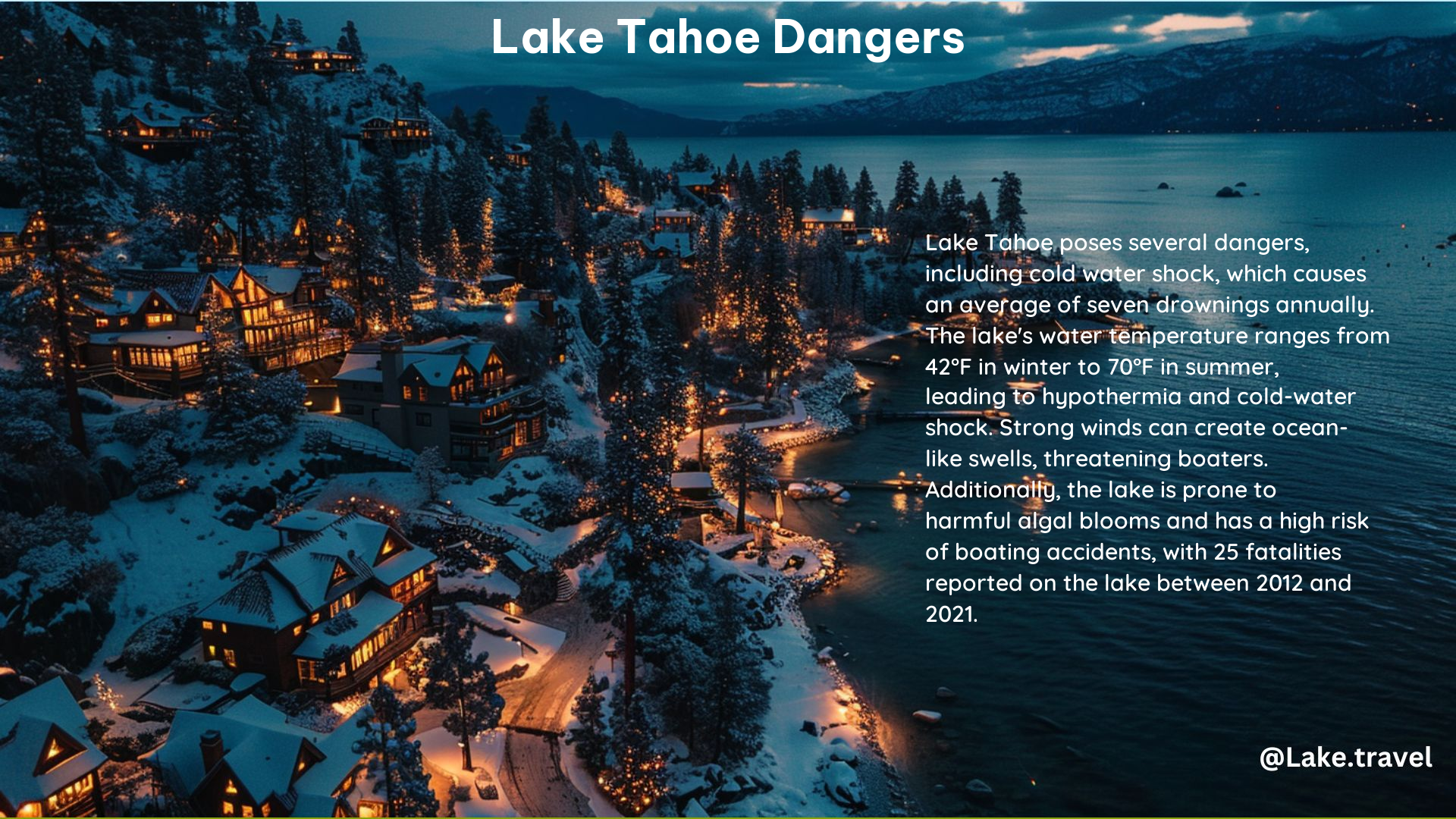Lake Tahoe, a renowned destination for outdoor enthusiasts, is not without its fair share of dangers. As a lakes touring enthusiast, it’s crucial to be aware of the potential hazards that can threaten your safety and enjoyment while exploring this stunning natural wonder. In this comprehensive guide, we’ll delve into the key dangers associated with Lake Tahoe, equipping you with the knowledge to navigate these waters safely.
Cold Water Shock and Hypothermia
One of the most significant dangers at Lake Tahoe is the risk of cold water shock and hypothermia. The lake’s water temperature can range from a chilly 42°F in the winter to a relatively warmer 70°F during the summer months. However, even in the summer, the water can still be dangerously cold, posing a threat to swimmers and boaters.
Cold water shock can occur at any water temperature and can lead to temporary paralysis, making it difficult for individuals to swim or stay afloat. This sudden loss of muscle control can quickly escalate into a life-threatening situation, especially for those who are not prepared for the extreme cold.
Hypothermia, the rapid loss of body heat, is another serious concern. When the body is exposed to cold water, it can quickly lose heat, leading to a dangerous drop in core body temperature. This can result in confusion, drowsiness, and ultimately, unconsciousness and death if left untreated.
To mitigate these risks, it’s essential for visitors to wear appropriate cold-weather gear, such as wetsuits or dry suits, and to be aware of the signs of cold water shock and hypothermia. Knowing how to respond quickly and effectively can mean the difference between life and death in these situations.
Boating Accidents

Lake Tahoe is a popular destination for recreational boating, but this activity is not without its dangers. Collisions between vessels are the most common serious accidents on the lake, often resulting in injuries and fatalities.
Novice boaters are particularly susceptible to accidents, as they may lack the experience and knowledge to navigate the lake safely. Failure to follow safety guidelines, such as maintaining a proper lookout, operating at safe speeds, and ensuring the vessel is properly equipped, can all contribute to these types of incidents.
To mitigate the risk of boating accidents, it’s crucial for visitors to take safety courses, familiarize themselves with the lake’s unique conditions, and always prioritize safety when operating a vessel. Wearing life jackets, maintaining a vigilant watch, and being prepared for rapidly changing weather conditions are all essential steps to ensure a safe and enjoyable boating experience.
Unpredictable Weather Conditions
Lake Tahoe is known for its rapidly changing weather patterns, which can pose a significant threat to both boaters and swimmers. Strong, shifting wind patterns can create ocean-like swells, catching unsuspecting visitors off-guard and putting them at risk of capsizing or being thrown overboard.
Sudden storms, heavy winds, and other extreme weather events can develop quickly, making it essential for visitors to monitor the forecast and be prepared to take immediate action if necessary. Knowing how to read the weather patterns and respond accordingly can mean the difference between a safe and enjoyable experience and a potentially life-threatening situation.
Harmful Algal Blooms
In recent years, Lake Tahoe has experienced the emergence of harmful algal blooms, which can pose a significant health risk to both humans and animals. These blooms can produce toxins that can cause skin rashes, stomach illness, and other serious health problems if ingested or exposed to.
Visitors should be aware of any advisories or warnings issued by local authorities regarding the presence of harmful algal blooms and take appropriate precautions, such as avoiding contact with the water or refraining from swimming or boating in affected areas.
Declining Water Clarity
The water clarity of Lake Tahoe has been a source of pride and a major draw for visitors, but in recent years, this clarity has been declining. Fine sediment particles and an increase in phytoplankton have contributed to a reduction in the lake’s renowned transparency, which can have a significant impact on the ecosystem.
While the decline in water clarity may not pose an immediate threat to visitors, it’s a concerning trend that highlights the need for continued conservation efforts to protect the lake’s delicate balance. Visitors can play a role in preserving the lake’s water quality by following best practices, such as avoiding the use of motorized watercraft in sensitive areas and properly disposing of any waste or litter.
Rescue Challenges
The vast size and depth of Lake Tahoe, combined with its cold water, make rescue operations particularly challenging and time-critical. In the event of an emergency, the distance to shore and the extreme temperatures can make it difficult for rescue teams to reach and assist those in distress.
Visitors should be aware of the challenges associated with rescue operations and take appropriate precautions to minimize the need for such interventions. This includes wearing life jackets, staying within their swimming or boating abilities, and being prepared to call for help if necessary.
By understanding these key dangers and taking the necessary precautions, lakes touring enthusiasts can enjoy the beauty and wonder of Lake Tahoe while prioritizing their safety and the preservation of this natural treasure.
